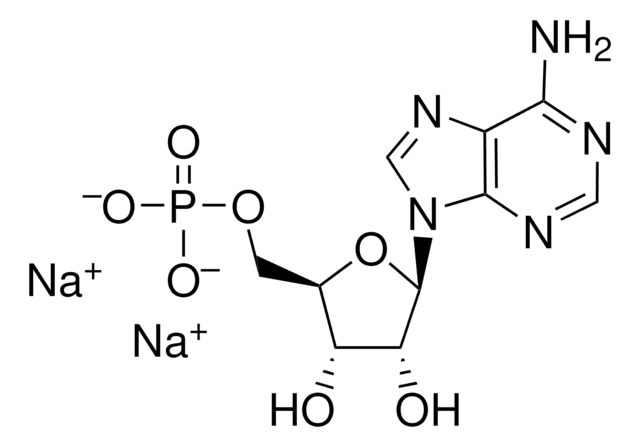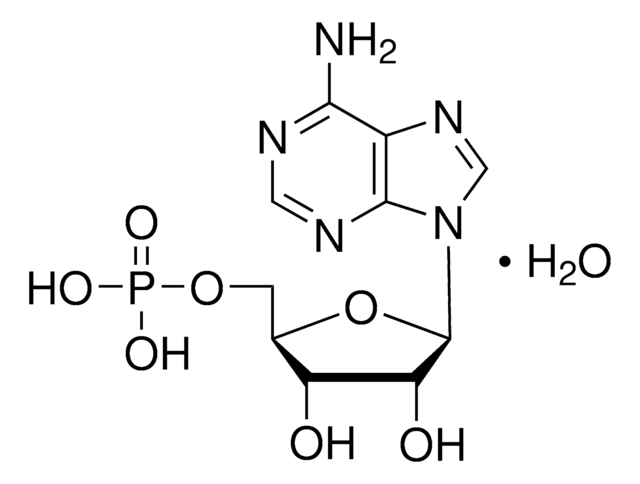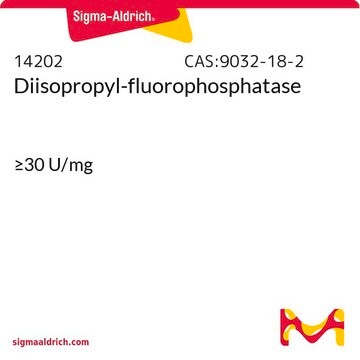M2689
Methyl γ-linolenyl fluorophosphonate
≥98%, methyl acetate solution
Synonym(s):
(6Z,9Z,12Z)-Octadecatrienyl-phosphonofluoridic acid
Sign Into View Organizational & Contract Pricing
All Photos(1)
About This Item
Empirical Formula (Hill Notation):
C19H34FO2P
Molecular Weight:
344.44
EC Number:
MDL number:
UNSPSC Code:
41106300
NACRES:
NA.77
Recommended Products
Biochem/physiol Actions
An analog of MAFP which has been widely studied as an inhibitor of phospholipases, FAAH, and as a cannabinoid receptor ligand.
Preparation Note
To change the solvent, simply evaporate the methyl acetate under a gentle stream of nitrogen and immediately add the solvent of choice.
signalword
Danger
hcodes
Hazard Classifications
Eye Irrit. 2 - Flam. Liq. 2 - STOT SE 3
target_organs
Central nervous system
supp_hazards
Storage Class
3 - Flammable liquids
wgk_germany
WGK 2
flash_point_f
3.2 °F - closed cup
flash_point_c
-16 °C - closed cup
ppe
Eyeshields, Faceshields, Gloves, type ABEK (EN14387) respirator filter
Certificates of Analysis (COA)
Search for Certificates of Analysis (COA) by entering the products Lot/Batch Number. Lot and Batch Numbers can be found on a product’s label following the words ‘Lot’ or ‘Batch’.
Already Own This Product?
Find documentation for the products that you have recently purchased in the Document Library.
Philippe J Nadeau et al.
Molecular biology of the cell, 20(16), 3628-3637 (2009-07-03)
ASK1 cysteine oxidation allows JNK activation upon oxidative stress. Trx1 negatively regulates this pathway by reducing the oxidized cysteines of ASK1. However, precisely how oxidized ASK1 is involved in JNK activation and how Trx1 regulates ASK1 oxidoreduction remains elusive. Here
Salimata Bagayoko et al.
PLoS pathogens, 17(9), e1009927-e1009927 (2021-09-14)
Regulated cell necrosis supports immune and anti-infectious strategies of the body; however, dysregulation of these processes drives pathological organ damage. Pseudomonas aeruginosa expresses a phospholipase, ExoU that triggers pathological host cell necrosis through a poorly characterized pathway. Here, we investigated
Our team of scientists has experience in all areas of research including Life Science, Material Science, Chemical Synthesis, Chromatography, Analytical and many others.
Contact Technical Service








